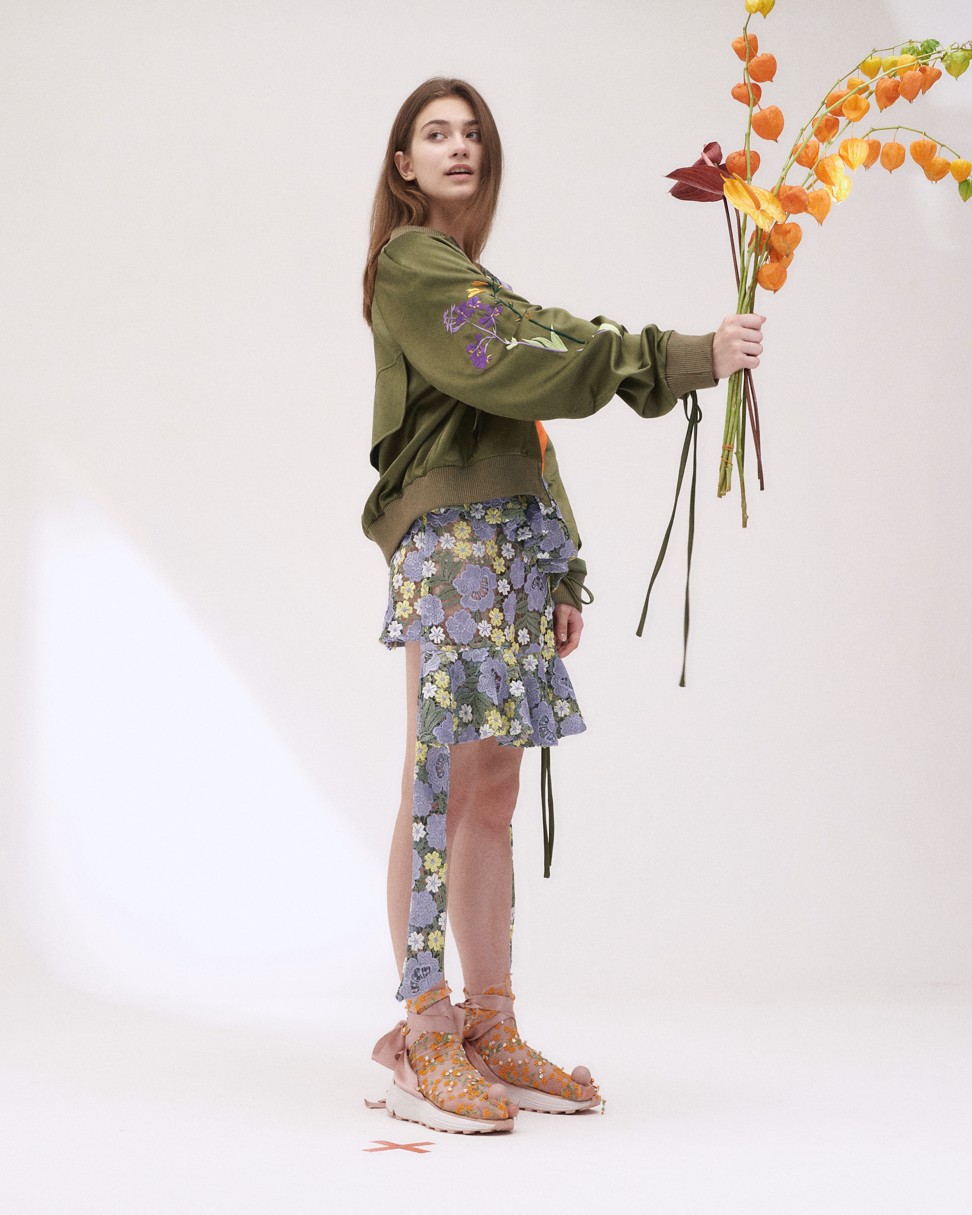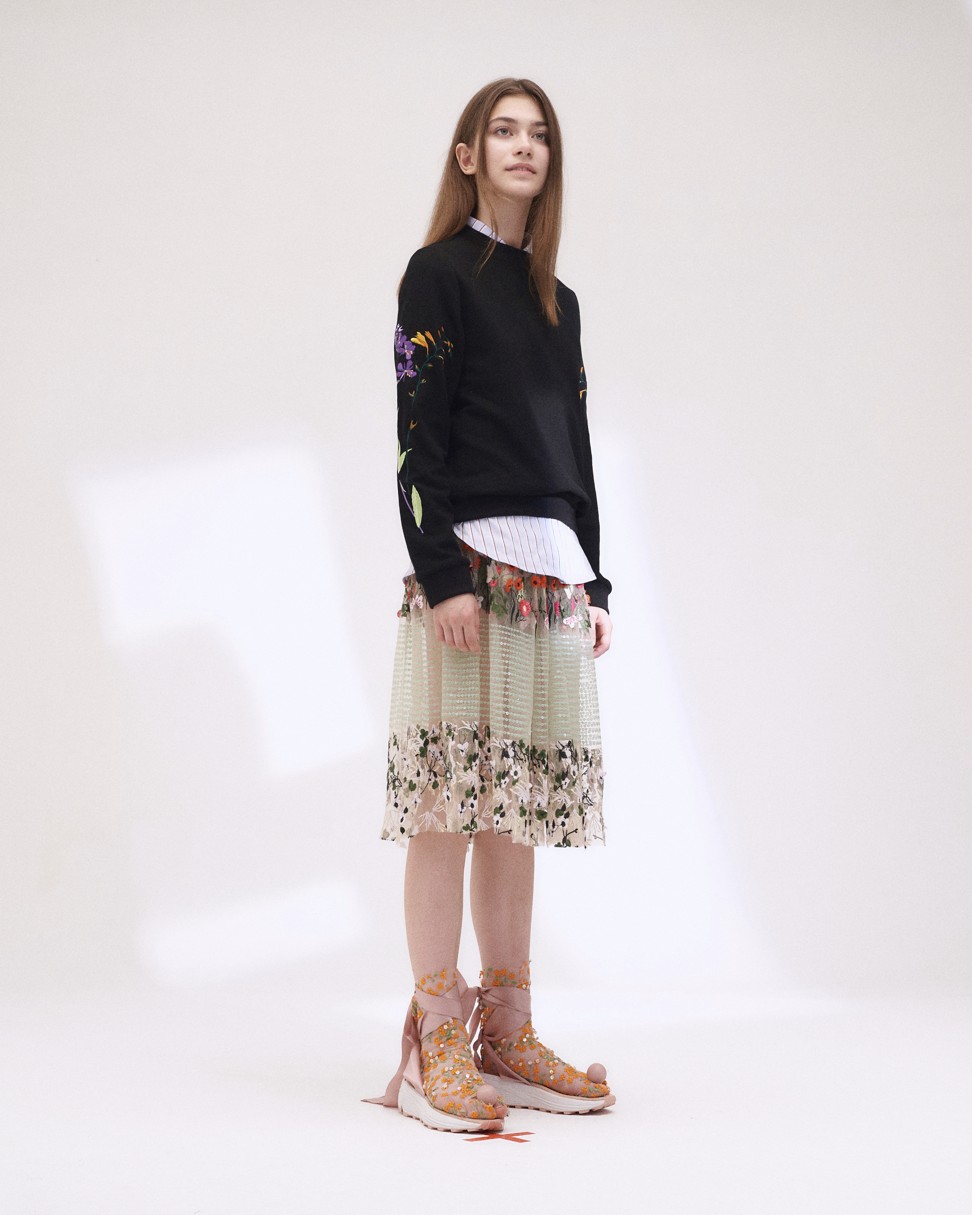
Women best at dressing women, says a man designing for them, New York-based Malaysian Jonathan Liang
- Liang worked for Givenchy and other French studios, before starting his own label in 2015
- His signature floral looks were inspired by his grandmother’s house in Penang
As a boy growing up on Penang island in Malaysia, Jonathan Liang remembers how much he loved the flowers in his grandmother’s garden. The plants grew in an air well inside the house, where tropical rain fell straight through a space in the roof.
For the 29-year-old designer, these flowers became a starting point, a motif for his creations. But lately, he’s been thinking of another island, far from home: Kihnu, a fishing town and an island in the Baltic Sea. The Estonian island is home to a community of matriarchs, who run local affairs while preserving traditional music and crafts.
Nothing beats being your own boss, says Sacai fashion label founder
Liang’s fascination with the Kihnu women is threaded through his spring/summer 2019 collection. Recently presented at Paris Fashion Week, the collection is a new imagining of Liang’s signature floral motifs and structured silhouettes. Embroidered hems and tassel details evoke folk handicraft, while layered cuts add contemporary freshness.
Throughout the collection, there is a sense of ease – a simplicity that, paradoxically, can only arise from the keenest attention to detail. The evolution of Liang’s designs is a testament to his experience and years in the fashion industry.


The Jonathan Liang label launched in 2015, but the young designer started his career much earlier. He graduated from Kuala Lumpur’s Raffles College and landed a job at Givenchy, moving to Paris in 2009. He went on to work for the studio Surface to Air and French brand IRO.
I am a man designing for women, but most of my favourite designers are women. Women designing for women, I feel, always have the strongest aesthetic
At the same time, his reputation as a designer was growing. From Paris, he designed his own collections under the name Nue. He also kept up his connection with Malaysia’s fashion industry, taking on a stint as creative director of the Malaysian brand Dude & the Duchess (now d.d. collective).
It was only after 2010 that the idea of running his own label became more concrete. The plan came about after a fortuitous meeting: a friend introduced him to his future business partner, Jake Chen.
“Jake is really smart, he studied business and luxury. I don’t think the brand would be what it is today without him. It’s really two halves,” says Liang. He describes himself as an introvert, while Chen is a networker.
When Liang talks about his vision for the label, he doesn’t hold back.
“I don’t want to dictate how women should dress. I don’t want to say, ‘Here’s a short, tight dress’ – and then use excuses, like telling women that it’s ‘freeing’. I’m pretty sure a large majority of women would find it restrictive.”

“I am a man designing for women, but most of my favourite designers are women,” he adds, citing influences such as Stella McCartney and Phoebe Philo. “Women designing for women, I feel, always have the strongest aesthetic.”
In his own designs, he works with loose yet structured fits, and often presents separates that can be coordinated to fit a woman’s existing wardrobe. To Liang, comfort and versatility is everything.
At the same time, his designs are unabashedly romantic. Through the years, he’s returned to vivid floral embroidery on bobbinet mesh; dresses and skirts are intimate and lush. The flowers may be inspired by his grandmother’s garden, or the folk art of the Kihnu women, or Irvin Penn’s photography. But there are always flowers.
“The embroidery looks strong, but it can work with T-shirts, work shirts, all occasions,” says Liang. “It’s a concept that’s quite hard to push sometimes, but I hope that women see that in my brand, every piece can go with something in their wardrobe.”
Malaysia luxury lovers divided: some hide their Hermes Birkins, others carry on shopping
Currently, Jonathan Liang has an exclusive deal in the China region with Lane Crawford. Earlier this year, the label launched a capsule collection with the luxury retail chain, which has stores in Hong Kong, Beijing, Shanghai and Chengdu.
Liang describes the fashion market in China as “still very new”. Although the growth and impact on global fashion has been rapid, he says increasing education among consumers will change the direction of the market.
“We’ve seen brands like Louis Vuitton, Prada, Gucci taking over [China]. But suddenly we’re seeing a huge expansion of Balenciaga and Off-White; these more underground brands are coming up.”

As for his label’s place in all this development, he’s in no hurry. “I don’t have grandiose plans,” he says. “I’d like to establish a good following among women, so they see us as a brand that is everlasting.”
His designs, like his approach to life, speak to a desire to slow down while keeping his eyes open.
Liang studied fine art, and thrives on having different creative outlets. This year, he took on the role of brand director of 8 Conlay, a luxury retail, hotel and residential development in Kuala Lumpur.
Malaysia’s first lady of fashion, Farah Khan, on 30 years in the industry, and the Muslim market
After almost a decade based in Paris, Liang is spending more time in Asia. While future plans for the Jonathan Liang label may take him to New York or London, he is in no rush to expand.
“With crazy expansion come crazy responsibilities and stuff that would eat my life,” he says. “Keeping up with the times is pressure enough. But we’re learning to take it really slow.”

